A number of posts I’ve written for this blog so far have focused on graveyards, particularly the grand Victorian graveyards of London. However, the graveyard featured in this post lies 1,000 miles from London, on a quiet hillside in Reykjavik, the capital of Iceland.

Unlike Britain, Iceland has no long history of cities as we would recognise them. Settled by the Vikings in the late 9th Century, Iceland has always had a small population (today it is around 300,000) and settlements tended to be small. Reykjavik has long been settled – today, one can visit the remains of a 10th Century longhouse discovered during demolition works in the 20th Century – but it only began life as a town in the mid-18th Century. The oldest buildings in the city are on Aðalstræti (“main street”), close to where the Viking longhouse is situated.
It was close to Aðalstræti that Reykjavik’s main graveyard was situated for around 800 years. Now a slightly gloomy paved square surrounded by hotels, museums and coffee shops, this ancient burial ground was called Víkurgarður. It is thought that a church was situated in this area since around the year 1000, when the Icelandic people converted to Christianity.
In 1838, however, the tiny burial ground at Víkurgarður was closed and a new, larger burial ground at nearby Suðurgata was consecrated, called Hólavallagarður. The Icelandic people had an interesting tradition around burial grounds – there was a folk belief that the first person to be buried in a graveyard would not rot, but would become the graveyard’s “guardian”, watching over the people subsequently buried there. At Hólavallagarður this “guardian” is Guðrún Oddsdóttir, wife of a local magistrate.

The name “Hólavallagarður” simply means “garden on a hill” – the photograph above shows the view over the city from the cemetery. The first time I came across this cemetery was on my first full day in Reykjavik, whilst walking out of the city centre towards the National Museum of Iceland. It was a damp, gloomy November day and there was no-one else around. I visited again a few days later, after the snow had fallen, on an equally quiet and peaceful day (although it was a great deal colder!).
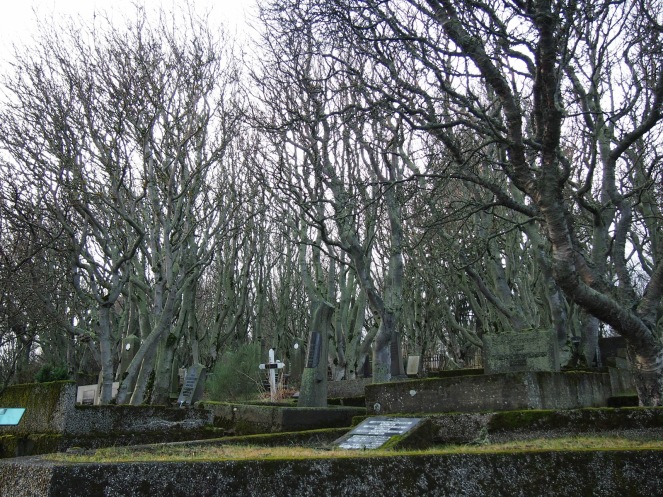
My initial impression of Hólavallagarður was of a rather dark, heavily forested space. The many trees in the graveyard, mostly birch and rowan, were planted in the early 20th Century. They give the graveyard a natural – if slightly claustrophobic – feel, and I imagine that on a sunny day in spring or summer Hólavallagarður looks and smells completely alive despite the condition of its residents. The trees also make Hólavallagarður rather distinctive, as trees are not a particularly common sight in Iceland, particularly outside of Reykjavik. Iceland was once heavily forested, but deforestation and soil erosion caused by human activity after settlement in the 9th Century means that only a tiny percentage of the country is now forested.


Hólavallagarður’s plots had all been bought by 1932, although many graves date from much later than this. It struck me whilst exploring the cemetery how untouched by war and vandalism it is – in London’s big cemeteries one sees signs everywhere of decay, vandalism, and the scars of Second World War air raids and ill thought out “modernisation” schemes by councils after the original cemetery companies sold up. In contrast, Hólavallagarður was well-kept and clean. The metal railings surrounding gravestones had not been stolen for scrap metal or for making weapons during wartime. It looked as though it has never been neglected. Dozens of redwings hopped and flew between the headstones and trees, shy birds that took off every time I pointed my camera in their direction.
Having spent a great deal of time exploring and photographing Victorian cemeteries and graves in London, I spotted some symbols and fashions similar to those popular in Victorian Britain. The grave pictured below shows an upturned, extinguished torch, a common signifier of death in 19th Century funerary imagery. This particular grave could also be a “broken column” grave, signifying that the man buried there was the head of the family.

The graves at Hólavallagarður are less grand, less ostenatious than some of those from the same period in Britain. This may partly be down to the fact that until relatively recently, Iceland was a poor country, only gaining its high standard of living after indpendence from Denmark in 1944. The modest, simple graves have a quiet dignity about them. Some of them, such as the one pictured below, reflect the green, organic nature of their surroundings.

As well as being home to many trees, Hólavallagarður is full of mosses and lichens. The air in Reykjavik is incredibly clean, providing ideal conditions for lichens to grow. Many of the graves are “fenced off” by stone walls or metal railings, leaving narrow, winding walkways covered in leaves and moss. Even before the snow came I had to watch my footing as I walked between graves, mindful of how slippery it was under foot.

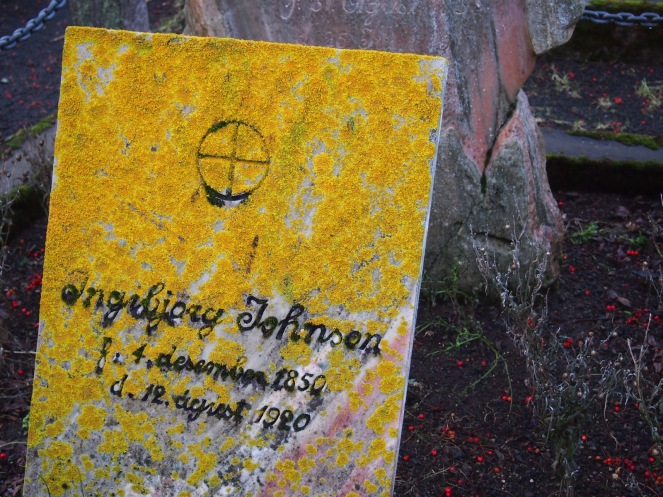
Uphill from the cemetery’s main entrance stands an elegant little structure, a beautiful red and white bell tower.

As well as the numerous living birds flitting around the cemetery, Hólavallagarður also has many birds on its memorials. On gravestones, birds can be interpreted as symbols of peace, or (particularly if they are doves) messengers from God.


Hólavallagarður is unique among cemeteries of a similar age – unlike other large urban cemeteries in Europe it has been untouched by war, vandalism and neglect, giving it a feel of peace and continuity not found in other 19th Century cemeteries. Art historian Björn Th. Björnsson has described it as “the largest and oldest museum in Reykjavik”, a place where “a living exhibition and history opens itself to anyone who can read the hand of the sculptor and discern from symbols and types of font the thoughts and deeds of the dead.” Reykjavik is a wonderful place to visit, and Hólavallagarður is a lovely, peaceful spot to while away a couple of hours wandering around the old graves.
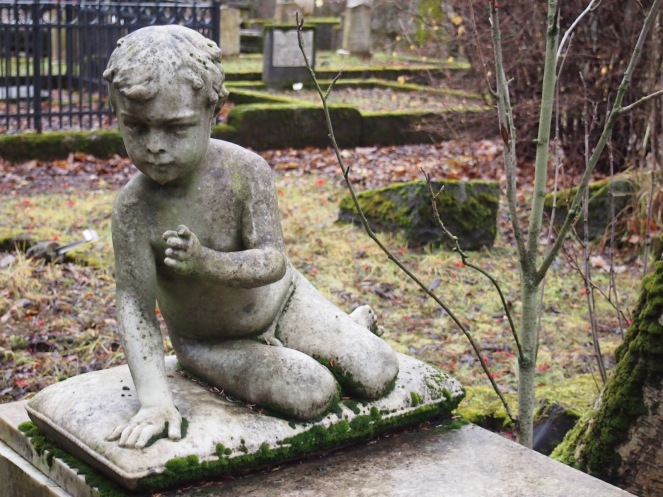

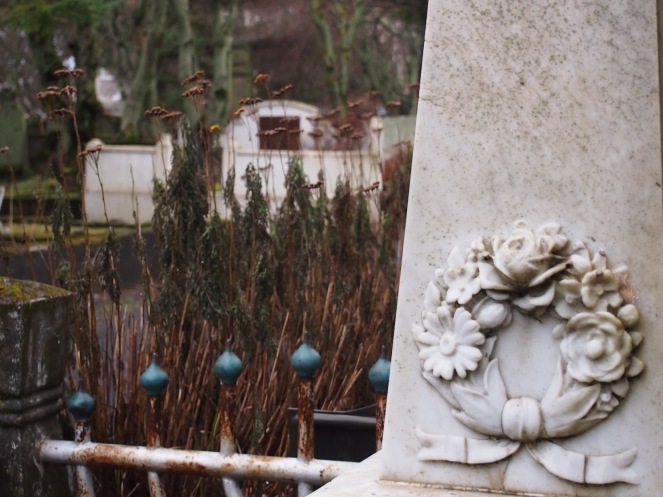


This blog post was originally published on Historical Trinkets on 3rd January 2013.
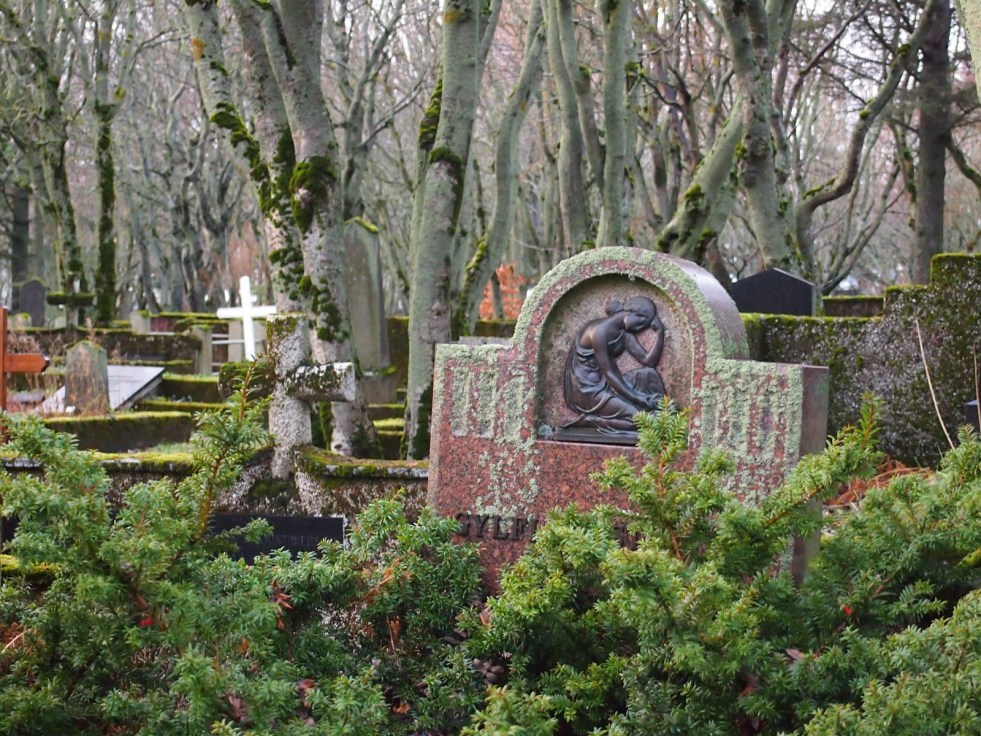

Fascinating and I really like the lichens.
LikeLike
Thank you! The lichens really added a lot of colour on a gloomy day.
LikeLike
A cemetery untouched by scrap metal dealers, war and vandalism – a rare thing indeed. Looks like it’s from a Tim Burton film!
LikeLike
I found it to be an incredibly atmospheric place – so unusual to find a burial ground so full of trees that hadn’t been abandoned or neglected at some point. And it was so clean and well kept – definitely put a lot of British cemeteries to shame!
LikeLike
Would you say there was a greater reverance for ancestors out there?
LikeLike
I’m not sure, really. Iceland has a very strong Lutheran Christian tradition and I’m not familiar enough with that denomination to know much about their traditions around graves and ancestors. Hólavallagarður probably reflects the traditions of some of the more wealthy members of society in Iceland – at the time that all of the plots were sold, Iceland was still a pretty poor country.
I’m hoping to explore more of Iceland at some point – it would be good to have a look round some of the burial grounds in more isolated Icelandic communities.
LikeLike
I missed this when I went to Reykjavik earlier in the year, the number of trees is very un-Icelandic, but the lichens and mosses most definitely are. It isn’t what I would have imagined of an Icelandic cemetery at all.
LikeLike
I’m not sure what I really expected of an Icelandic cemetery! Before visiting Reykjavik, I’d had a quick scan of Google Maps to see if there were any graveyards near where I was staying, but I actually found this place by accident whilst walking to the National Museum of Iceland. It was a lovely place to wander around and was incredibly peaceful.
LikeLike
The trees are fabulous – so moody! The graves themselves put me in mind of an old wreck of a churchyard in Skibbereen, that I knew and enjoyed visiting many times years ago: neglected, some of them broken apart by the workings of the sea-storms, yet strangely calm and beautiful.
LikeLike
The trees absolutely made this graveyard – without them, the atmosphere would have been completely different.
LikeLike
Your lovely post inspired me to add this cemetery to 199 Cemeteries to See Before You Die. What an amazing place!
LikeLike
My great-great grandfather Hans Peter Johan Beldring was district medical director and died in 1844. He died in Iceland age 44. Is his grave in HOLAVALLACARDUR?? Please reply to wlf924@yahoo.com
LikeLike
Hi, I’m afraid I don’t have access to any burial records for Hólavallagarður but there may be information about your relative on the cemetery’s Find a Grave page: https://www.findagrave.com/cemetery/2334988/h%C3%B3lavallagar%C3%B0ur-cemetery
Alternatively there are some contact details on this webpage that you may find helpful: https://translate.googleusercontent.com/translate_c?depth=1&hl=en&prev=search&rurl=translate.google.co.uk&sl=is&sp=nmt4&u=https://www.gardur.is/gardur.php%3FgID%3D004&usg=ALkJrhi5fdYnsYP81RL6AuIArPNNnlC1UQ
LikeLike
Both Hans P. J. Beldring and his wife are buried in Vallanes in the east of Iceland, but their home was Brekka in Fljótsdalur.
LikeLike